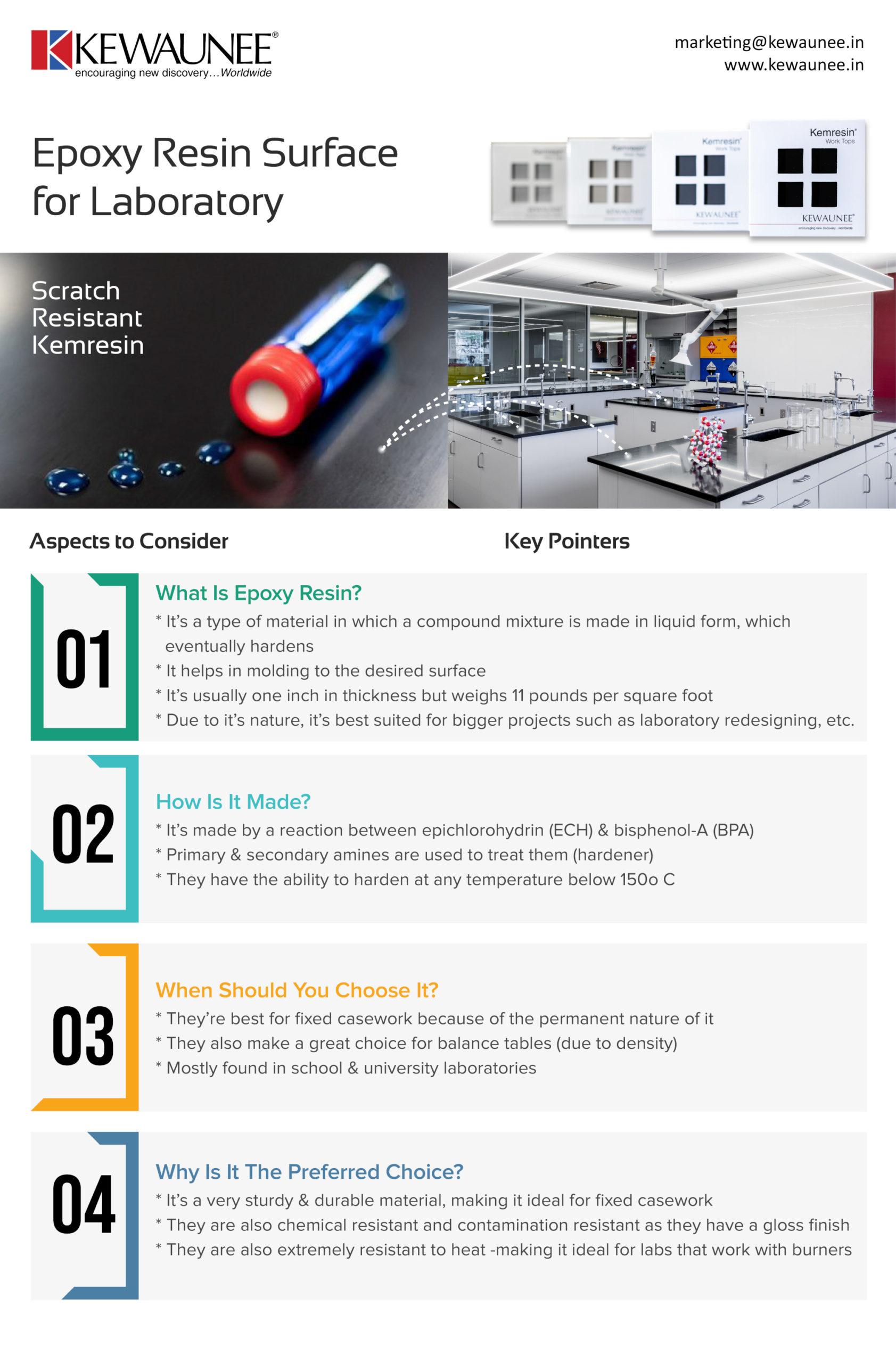Epoxy Resin Surface For Laboratory
Epoxy resins are a very unusual material because they can be mixed into a liquid and moulded into any shape that we require. Because of their high durability and resistance to harsh environments, they are well-suited for any laboratory. In this infographic, we’re explaining the process and the benefits of using an epoxy resin surface for your laboratory.
At Kewaunee International, we have a wide range of epoxy resin furniture, which can be viewed here.
| Aspects to Consider | pointers |
| What is epoxy resin? |
|
| How is it made? |
|
| When should you choose it? |
|
| Why is it the preferred choice? |
|
Comments are closed.











